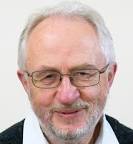


Two-dimensional organic materials offer atomic precision for optoelectronics and energy-efficient nanoelectronics, but most are not easily patterned and tuned. The fully conjugated Zn-porphene, (C20N4Zn)4 has now been prepared from Zn porphyrin by oxidative polymerization on aqueous surface and transferred to solid substrates. Its structure was established by imaging as well as in-situ and ex-situ spectroscopy. Reversible insertion of other metal ions is possible and promises an
atomic canvas for painting with thousands of distinct metal ions and ligands without taking any ð centers out of conjugation. Unlike earlier computational results, which predicted a P4mm (D4h) square unit cell and metallic conductivity, ours resemble those for antiaromatic molecules and predict Zn-porphene to be a two-dimensional antiaromatic semiconductor with a pair of P2mm (D2h) rectangular unit cells, rapidly interconverting via a P4mm (D4h) square structure by tunneling and/or thermal excitation. This result is supported by measurements of electrical conductivity and of N(1s) chemical shift in X-ray photoelectron spectra.
Josef Michl was born in 1939 in Prague, Czechoslovakia. He received his M.S. in Chemistry in 1961 with V. Horák and P. Zuman at Charles University, and his Ph.D. in 1965 with R. Zahradník at the Czechoslovak Academy of Sciences, all in Prague. He left Czechoslovakia in 1968, did postdoctoral work with R. S. Becker at the University of Houston, with M. J. S. Dewar at the University of Texas at Austin, with J. Linderberg at Aarhus University, Denmark, and with F. E. Harris at the University of Utah, where he stayed and became a full professor in 1975 and served as chairman in 1979-1984. In 1986-1990 he held the M. K. Collie-Welch Regents Chair in Chemistry at the University of Texas at Austin and subsequently moved to the University of Colorado, Boulder, CO, where he is Professor of Chemistry presently. Professor Michl has held close to a hundred visiting professorships and named lectureships, delivered hundreds of invited lectures at institutions and conferences, has served on many professional and editorial boards, advisory councils, and committees, and has organized several international meetings. He has been a Sloan, a Guggenheim, a Fulbright, and a University of Colorado Faculty Fellow, has won the Cope Scholar, Utah Section, Kosolapoff and James Flack Norris ACS Awards, the A. v. Humboldt Senior U.S. Scientist, Japan Society for Promotion of Science, Inter-American Photochemical Society, and Wichterle Awards, the Schrödinger and Porter Medals, the J. Heyrovský and Charles University Gold Medals, the Patria award from the Czech government, and the Marinus Smith Award of the University of Colorado (for work with undergraduates). He has received honorary degrees from Georgetown University, the University of Pardubice and the Masaryk University. He is a member of the US National Academy of Sciences, the American Academy of Arts and Sciences, and the President of the International Academy of Quantum Molecular Science, and an honorary member of the Czech Learned Society. Professor Michl was editor-in-chief of Chemical Reviews from 1984-2014. He had a long association with IUPAC, where he chaired the Photochemistry Commission. He has co-authored five books on photochemistry and polarization spectroscopy, and over five hundred scientific papers in the areas of organic, inorganic, theoretical, and physical chemistry. In the past, his research has dealt with theoretical and experimental aspects of organic photochemical reactions, interpretation of linear and magnetic circular dichroism of cyclic pi-electron systems, preparation and characterization of organic and main-group inorganic reactive intermediates, linear chain conformations, theory of sigma electron delocalization and of spin-orbit coupling in biradicals, gas-phase cluster ions formed by sputtering, and several other topics.



Two-dimensional organic materials offer atomic precision for optoelectronics and energy-efficient nanoelectronics, but most are not easily patterned and tuned. The fully conjugated Zn-porphene, (C20N4Zn)4 has now been prepared from Zn porphyrin by oxidative polymerization on aqueous surface and transferred to solid substrates. Its structure was established by imaging as well as in-situ and ex-situ spectroscopy. Reversible insertion of other metal ions is possible and promises an
atomic canvas for painting with thousands of distinct metal ions and ligands without taking any ð centers out of conjugation. Unlike earlier computational results, which predicted a P4mm (D4h) square unit cell and metallic conductivity, ours resemble those for antiaromatic molecules and predict Zn-porphene to be a two-dimensional antiaromatic semiconductor with a pair of P2mm (D2h) rectangular unit cells, rapidly interconverting via a P4mm (D4h) square structure by tunneling and/or thermal excitation. This result is supported by measurements of electrical conductivity and of N(1s) chemical shift in X-ray photoelectron spectra.
Josef Michl was born in 1939 in Prague, Czechoslovakia. He received his M.S. in Chemistry in 1961 with V. Horák and P. Zuman at Charles University, and his Ph.D. in 1965 with R. Zahradník at the Czechoslovak Academy of Sciences, all in Prague. He left Czechoslovakia in 1968, did postdoctoral work with R. S. Becker at the University of Houston, with M. J. S. Dewar at the University of Texas at Austin, with J. Linderberg at Aarhus University, Denmark, and with F. E. Harris at the University of Utah, where he stayed and became a full professor in 1975 and served as chairman in 1979-1984. In 1986-1990 he held the M. K. Collie-Welch Regents Chair in Chemistry at the University of Texas at Austin and subsequently moved to the University of Colorado, Boulder, CO, where he is Professor of Chemistry presently. Professor Michl has held close to a hundred visiting professorships and named lectureships, delivered hundreds of invited lectures at institutions and conferences, has served on many professional and editorial boards, advisory councils, and committees, and has organized several international meetings. He has been a Sloan, a Guggenheim, a Fulbright, and a University of Colorado Faculty Fellow, has won the Cope Scholar, Utah Section, Kosolapoff and James Flack Norris ACS Awards, the A. v. Humboldt Senior U.S. Scientist, Japan Society for Promotion of Science, Inter-American Photochemical Society, and Wichterle Awards, the Schrödinger and Porter Medals, the J. Heyrovský and Charles University Gold Medals, the Patria award from the Czech government, and the Marinus Smith Award of the University of Colorado (for work with undergraduates). He has received honorary degrees from Georgetown University, the University of Pardubice and the Masaryk University. He is a member of the US National Academy of Sciences, the American Academy of Arts and Sciences, and the President of the International Academy of Quantum Molecular Science, and an honorary member of the Czech Learned Society. Professor Michl was editor-in-chief of Chemical Reviews from 1984-2014. He had a long association with IUPAC, where he chaired the Photochemistry Commission. He has co-authored five books on photochemistry and polarization spectroscopy, and over five hundred scientific papers in the areas of organic, inorganic, theoretical, and physical chemistry. In the past, his research has dealt with theoretical and experimental aspects of organic photochemical reactions, interpretation of linear and magnetic circular dichroism of cyclic pi-electron systems, preparation and characterization of organic and main-group inorganic reactive intermediates, linear chain conformations, theory of sigma electron delocalization and of spin-orbit coupling in biradicals, gas-phase cluster ions formed by sputtering, and several other topics.